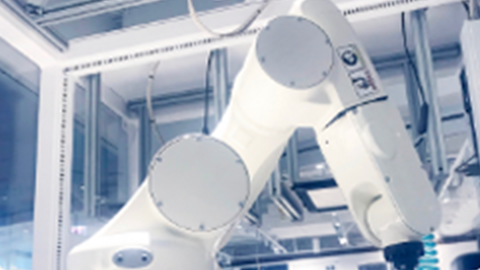Automation: the essential savior for auto recalls
February 10, 2020

The Motor Vehicle (Amendment) Act 2019 came into effect on September 1, 2019. The revised act introduced several new features to make our roads safer; such as – hefty fines for violators and reckless drivers, higher compensation for road rage victims and, for the first time, it covered vehicle recalls – which has really stood out for automation industry experts.
Vehicle recalls, until the introduction of this act was only voluntary with automakers publicly acknowledging the type of fault and suggesting a timeline to fix the problem. But now as per the new law, central government can direct auto makers to recall vehicles if it is not satisfied on safety or emissions aspects. This will force automakers to be more transparent and more responsive and are likely to come under a greater scrutiny. They’ll now need to be even more proactive to identify vehicle faults and notify the government and general public before any third-party agency does so. Well, my intention here is not to scare anyone but to address the elephant in the room.
Automobiles such as a four-wheeler is a complex machine created by around 30,000 big/small components and sub-assemblies – playing their respective roles in the overall functioning of the machine. Now these components/sub-assemblies can come from hundreds of part suppliers with each one of them having their own manufacturing process. For example, a four-wheeler manufacturer maybe sourcing a brake assembly from an ancillary who is itself using tens of components to build the brake assembly. Any defect in a particular component can lead to a failure of the brake assembly after a certain number of operations (say after the brake pedal is pressed a thousand times) leading to catastrophic consequences. While every manufacturer wants to produce high quality components, it is not always possible owing to a mix of factors like design issues, inconsistent processes, inferior raw materials etc. which creep into the supply chain. Auto components are always produced in batches and a defective component can trickle down to the entire set and ultimately affects the vehicles of different variants and sub-brands. In the above example, once the automaker realises that there is a defective component, they may move to recall the vehicles from the market. Recalling a vehicle is expensive from a brand impact as well as cost (checking, servicing, etc.) point of view. If the automaker can recall precisely the affected vehicles, they can save cost as well as avoid inconveniencing their customers. But which ones to recall? Different batches of brake assemblies may have been mixed while installing these on the vehicles and not all of them may be defective. To make matters even more complicated, the defect may have originated from a defective batch of brake shoes (as an example) and multiple brake shoe batches may have been mixed while assembling the brake assemblies!
This is where traceability comes into the picture. Simply put, traceability is a multi-step process focusing on giving a unique identity (usually by way of bar codes) to every component and sub-assembly at every stage of the assembly process. Again, using the example cited above, with traceability the automaker can determine the serial numbers of all the cars that have been fitted with the defective sub-assembly that were produced using the defective brake shoes. But since these sub-assemblies were produced by their supplier, this can only work if their suppliers have also adopted traceability. Automation systems today can enable this kind of product traceability throughout the complete supply chain. It is essential for any automotive maker to have a strong product traceability to trace faulty or damage prone products and take steps to contain the issue. It starts right at the component level; showcases its magic at sub-assembly, assembly and final product level. Traceability empowers a manufacturer to quickly identify non-conforming parts and vehicles while reducing checks on unaffected ones.
OMRON is a leading player for automotive traceability and we are excited to have one of the largest product and solution portfolios in the segment ranging from Laser Markers, Barcode Readers and Verifiers, RFID readers as well as Machine Controllers that can read/write from the MES/ERP layer to support the implementation of traceability.





.jpg)
.jpg)
.jpg)
Comment